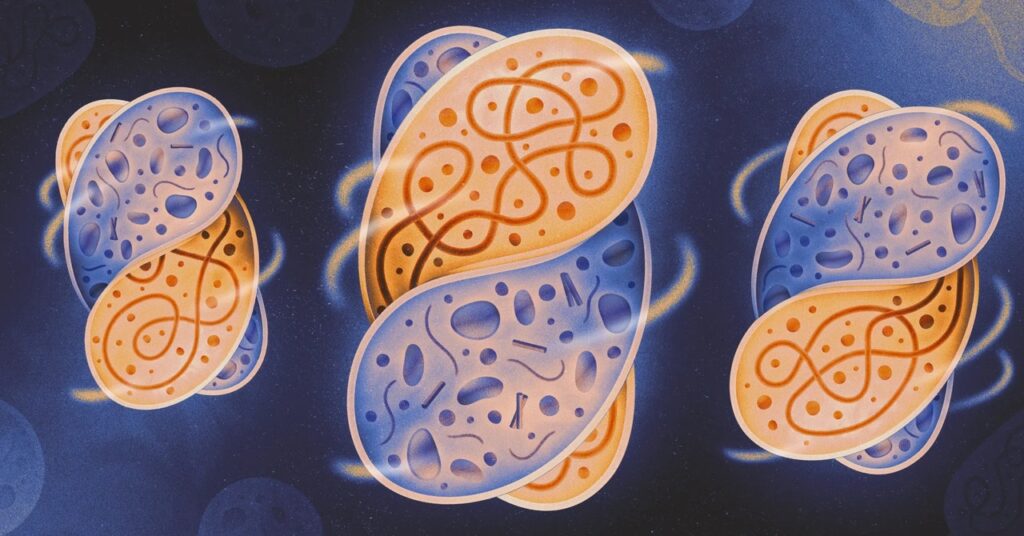The original version of This story It appeared in Quanta Magazine.
Far from being lonely operators, most unicellular microbes maintain complex relationships. In the ocean, the soil and the intestine, they can fight and eat each other, exchange DNA, compete for nutrients or feed on the by -products of others. Sometimes they become even more intimate: a cell can slide inside another and feel comfortable. If the conditions are adequate, it could stay and be welcome, generating a relationship that could last generations or billions of years. This phenomenon of one cell living within another, called endosimbiosis, has driven the evolution of complex life.
There are examples of endosimbiosis everywhere. Mitochondria, energy factories in your cells, They were ever free life bacteria. Photosynthetic plants owe their sugars spun by the chloroplast, which was originally an independent organism. Many insects obtain essential nutrients. of the bacteria that live inside. And last year the researchers discovered the “nitroplast”, An endosimbiont that helps some algae to process nitrogen.
Much of life depends on endosimbiotic relationships, but scientists have struggled to understand how they happen. How an internalized cell evades digestion? How do you learn to reproduce inside your guest? What makes a random fusion of two independent organisms into a stable and lasting association?
Now, for the first time, researchers have seen the opening choreography of this microscopic dance of induce endosimbiosis in the laboratory. After injecting bacteria into a fungus, a process that required a creative problem resolution (and a bicycle pump), the researchers managed to generate cooperation without killing bacteria or host. Their observations offer an idea of the conditions that make it possible for the same to happen in microbial nature.
The cells even adapted to each other faster than expected. “For me, this means that organisms really want to live together, and symbiosis is the norm,” he said Vasilis KokkorisA mycologist who studies the cell biology of symbiosis at the VU University of Amsterdam and did not participate in the new study. “So that is great news for me and for this world.”
The first attempts that failed reveal that most cellular love adventures fail. But by understanding how, why and when organisms accept endosimbiones, researchers can better understand the key moments of evolution and also potentially develop synthetic cells designed with superpoderous endosimbions.
The advance of the cell wall
Julia VorholtMicrobiologist of the Swiss Institute of Technology of Zurich, in Switzerland, has been baffled for the circumstances of endosimbiosis. The researchers in this field theorized that once a bacterium sneaks into a host cell, the relationship oscillates between infection and harmony. If the bacteria reproduces too fast, run the risk of exhausting the host resources and triggering an immune response, resulting in the death of the guest, the guest or both. If you reproduce too slowly, it will not be established in the cell. Only in rare cases, they thought, the bacteria reaches a reproductive rate of gold ricitos. Then, to become a true endosimbionte, it must infiltrate the reproductive cycle of its host to travel to the next generation. Finally, the guest genome must eventually mutate to accommodate the bacteria, allowing both to evolve as a unit.
“They become addicted to each other,” said Vorholt.

